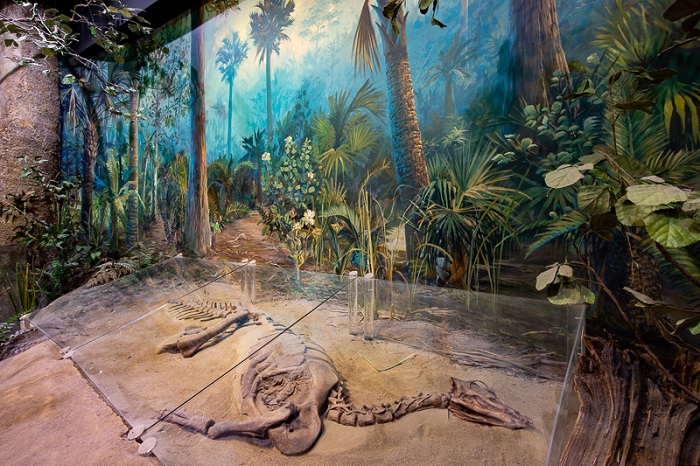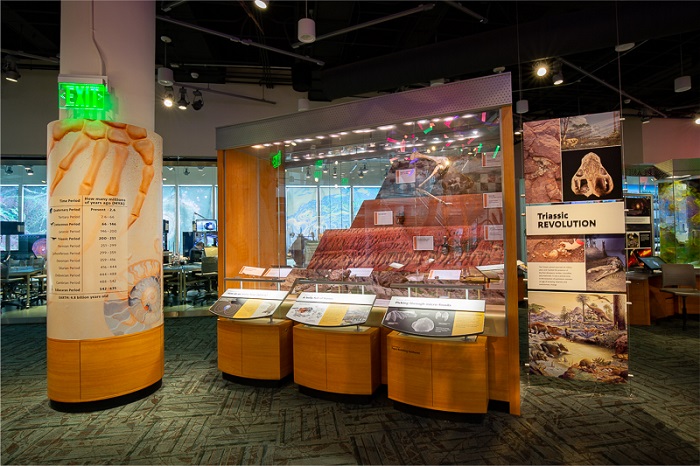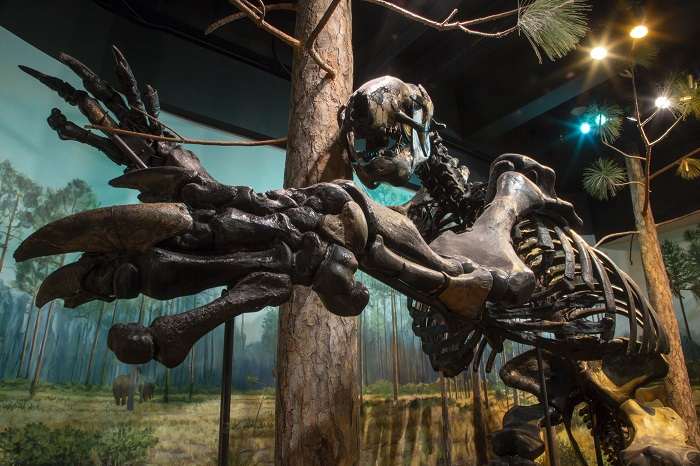3 NCMNS Paleontologists’ Favorite Exhibits
For immediate release ‐ December 05, 2019
Contact: Jessica Wackes, 919.707.9850. Images available upon request

Paleontology Exhibit Feature #1
Willo, the Thescelosaurus in the Prehistoric North Carolina Exhibit (Nature Exploration Center, 3rd Floor) by Lindsay Zanno, Ph.D., Head of Paleontology
Why it matters
Thescelosaurus was one of the last dinosaurs to live prior to the mass extinction event at the end of the Cretaceous that killed off three of every four species on Earth. To reconstruct how extinction occurs, we need a complete understanding of the plants and animals that were alive before and after these events. Thescelosaurus didn’t survive the environmental change brought on by the asteroid impact 66 million years ago. If we want to protect ourselves and the rest of life on Earth today from the rapid environmental changes we’re currently facing, we need to know why.
Why it’s unique
Our Thescelosaurus – dubbed “Willo” – is one of the most complete and best-preserved skeletons of a rare and mysterious lineage of small-bodied, plant-eating dinosaurs. Although Willo has been a part of NCMNS for almost two decades, scientists from all over the world continue to reach out to us multiple times a year to collect new data from the specimen. Recently, Willo’s remarkably complete skull has been used to shed new light on the evolution of sensory systems, such as hearing, eyesight, brain shape and diet in dinosaurs.

Paleontology Exhibit Feature #2
Triassic Revolution (Nature Research Center, 3rd Floor) by Christian Kammerer, Ph.D., Paleontology Research Curator
Why it matters
The Triassic Period (~252 to 201 million years ago) makes up the first part of the Mesozoic Era, otherwise known as the “Age of Reptiles.” In many ways, the Triassic is less well-understood than the later Jurassic and Cretaceous Periods, but I think it’s the most interesting of the three in terms of broad-scale evolutionary questions. Most of the living major groups of vertebrates originated in the Triassic (such as frogs, salamanders, turtles, crocodilians, lizards and mammals) and it is the only period in geological history bounded by two mass extinctions. So, research on this time period is important for understanding modern extinctions.
Why it’s unique
You may be surprised to learn that in general, North Carolina has a very poor fossil record for dinosaurs. However, our Triassic vertebrate record is spectacular, with numerous complete skulls and articulated skeletons known from quarries around the Research Triangle and north of Greensboro. Our exhibit case contains two particularly important early crocodile-relatives discovered in Durham: Postosuchus alisonae and Dromicosuchus grallator. These fossils are the only representatives of their species, though we hope to find more in the future!

Paleontology Exhibit Feature #3
Giant Ground Sloth, the Eremotherium eomigrans in the Prehistoric North Carolina Exhibit (Nature Exploration Center, 3rd Floor) by Eric Lund, MSc, Paleontology Lab Manager
Why it matters
North America’s extinct megafauna, like the Giant Ground Sloth, are important for understanding biodiversity and extinctions. Notably, North America’s megafauna were important for the proliferation and dispersal of avocados and other custard-type fruits that we continue to enjoy today.
Why it’s unique
Approximately 1.5 million years ago, this massive animal could be found roaming North Carolina. This exhibit showcases one of the few specimens whose fossils can be found right here in our state. Museum visitors can catch a glimpse of this creature’s distant relative by traveling up one floor to see our two-toed sloth hanging out in the Living Conservatory.
by our Paleontology team and Micah Beasley, PR & Marketing Coordinator. Facilitated by Jessica Wackes, PR & Marketing Coordinator. Photos: Karen Swain/NCMNS.
For more information about our upcoming activities, conservation news and ground-breaking research, follow @NaturalSciences on Instagram, Twitter and Facebook. Join the conversation with #visitNCMNS.

